People
Artist Martine Syms and Lil Miquela Creator Trevor McFedries on Why You Don’t Need to Find Your Purpose Before You’re 30
Syms and McFedries sat down with Artnet News for a wide-ranging conversation.
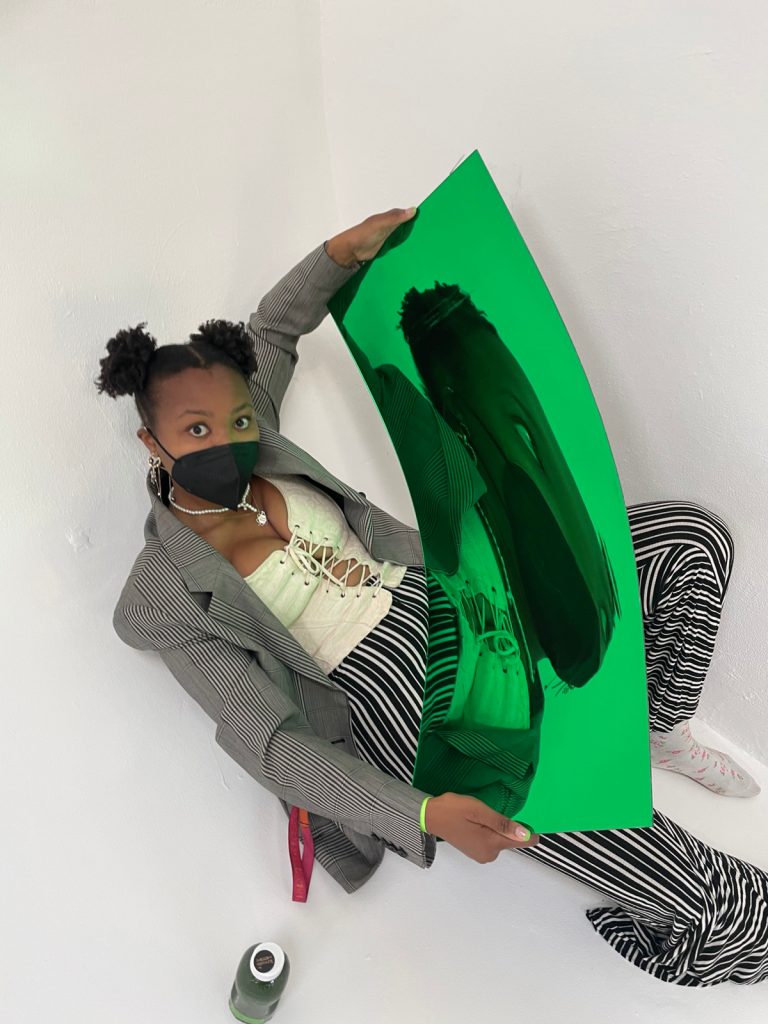
Syms and McFedries sat down with Artnet News for a wide-ranging conversation.

Arden Fanning Andrews

In these turbulent times, creativity and empathy are more necessary than ever to bridge divides and find solutions. Artnet News’s Art and Empathy Project is an ongoing investigation into how the art world can help enhance emotional intelligence, drawing insights and inspiration from creatives, thought leaders, and great works of art.
It was only a few years ago that the startup Brud announced it was the anonymous team behind virtual pop icon Lil Miquela. By then, co-founder Trevor McFedries had already charted a path through various industries: He was the first DJ to play at every show during the Warped Tour in 2008, a producer for the likes of Azealia Banks and Sky Ferreira, and was tapped for J.J. Abrams’s film production company, Bad Robot. A natural instinct for tracking patterns and trends, plus a keen sense of emotional intelligence, seems to continuously sharpen McFedries’s ability to anticipate the future.
If non-fungible tokens are suddenly on artists’ mind today, consider that McFedries coordinated a lucrative NFT deal for Miquela’s art—last year. Now, he runs Friends with Benefits, a platform using community tokens to capture the value of social media. Arguably the most influential avatar on the planet, Miquela has become a valuable player in fashion, music, art, and tech—a handful of the systems that McFedries and artist Martine Syms often find themselves discussing.
Syms has built an award-winning body of work that spans physical and virtual genres while examining existing power structures, traditions, and gender and racial inequalities. A scholar with a skill for social commentary, she releases a quarterly called Scene Report through her Dominica Publishing imprint, is the host of Carnegie Museum of Art’s “Mirror With A Memory” podcast, and just wrapped her newest film, SLIP. Since being introduced by a mutual friend about half a decade ago, Syms and McFedries have shared dancefloors, debates, and essential VR supplies.
From their respective homes in Los Angeles, the two spoke with Artnet News about the role empathy plays in their work, living in service of ideas, and why deadlines don’t matter in 2021.
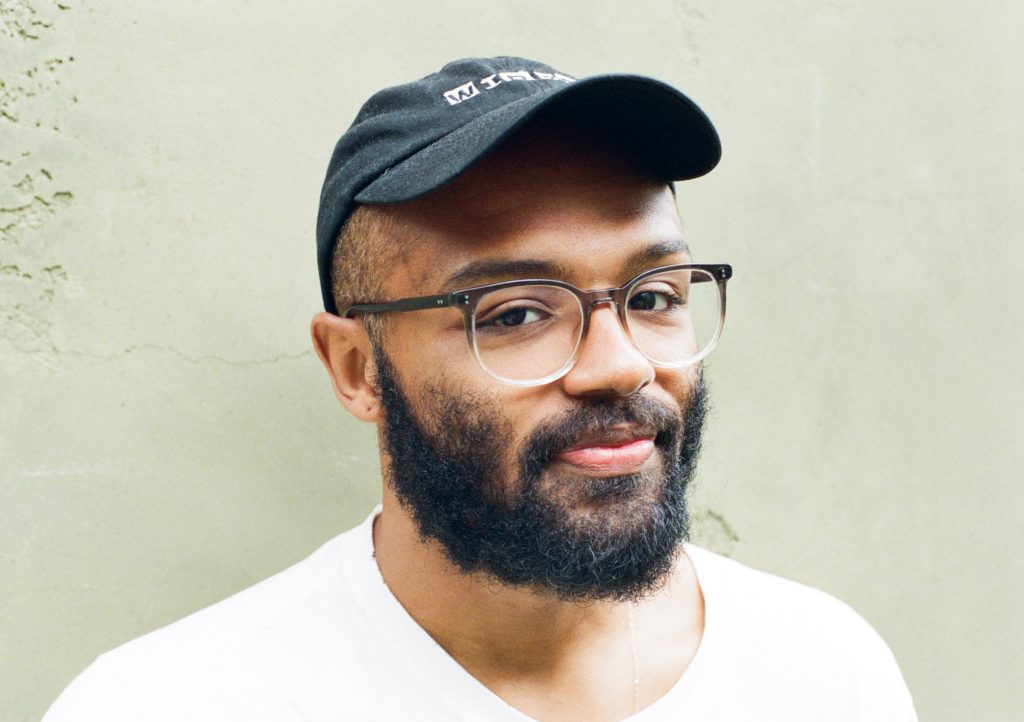
Trevor McFedries. Photo: Tatti Ribeiro.
Trevor, you mentioned you’ve had some minor collaborations. What have those involved?
Trevor: We’re always kind of riffing on ideas and sharing things. I’m learning from Martine constantly, but I was lucky enough to get a thank you in one of her shows because I contributed a small amount of video help.
Martine: Multiple—two shows! Two.
Trevor: Two! True, actually two shows.
Martine: Trevor helped me with the film Incense, Sweaters & Ice that was at MoMA. With the film, he gave me some support, and then on a show I had in 2018 that was called “Grand Calme.” In New York it was called “Big Surprise.” It’s a lot of animated work and motion capture, and Trevor put me in touch with a lot of people.
Both of you have resumes that are so stacked and so varied from art, writing, music, film, digital avatars. What brought you to this point in your careers?
Trevor: I’ll speak for myself, but I often think when you see resumes like that it’s probably more a reflection of like, the Black struggle of navigating a career path. There’s probably a pretty direct line I could have taken, but along the way I kind of had to zig and zag to make ends meet and figure out some things. And I’m quite thankful for a lot of those things. But ultimately, I think that my resume is all over the place for a lot of reasons. One of them is circumstances required doing some side hustles.
Martine: Yeah, that’s valid. I also like just learning. I love to do things I haven’t done before. There’s just a part of me that always has that kind of tweaker energy. It helps me understand the world more. I guess I would say my practice is a way of me touching the world, essentially, so it’s like the conduit through which I get to have certain experiences. I’m really interested in plurality, so if there’s an opportunity to do something that I can make in my own way, I’m gonna do it.
Do you categorize yourself with a title right now? I feel like a lot of people in 2021 are saying, “I don’t really feel like being in a category, I don’t really feel like being in a box at all.” You’ve done so much, where do you lean with that topic, careerwise?
Martine: I always just call myself an artist because it’s sort of easy. I’m not so concerned with it, but I also don’t have a gut reaction against any titles, either. I’m in service of ideas. If I need to use a certain word to get my idea executed, then I’ll go with that. Because all of them are true. You could call me a writer, you could call me a director, you could call me an artist, you could call me an entrepreneur, whatever, I’ve done all those things. And I could chop everything up to read coherently as that thing, but from the inside out that’s not so important. That’s just a part of the game.
Trevor: Yeah, I’m probably in a similar boat. I think I’ve always kind of chased magic, that feeling of “I wanna know more about that, I wanna do all of that.” A big goal for me, by the end of maybe 2022 would be to have just one email address [laughs]. That would be like, big goals. I’d like to minimize the stress of this area, at least.
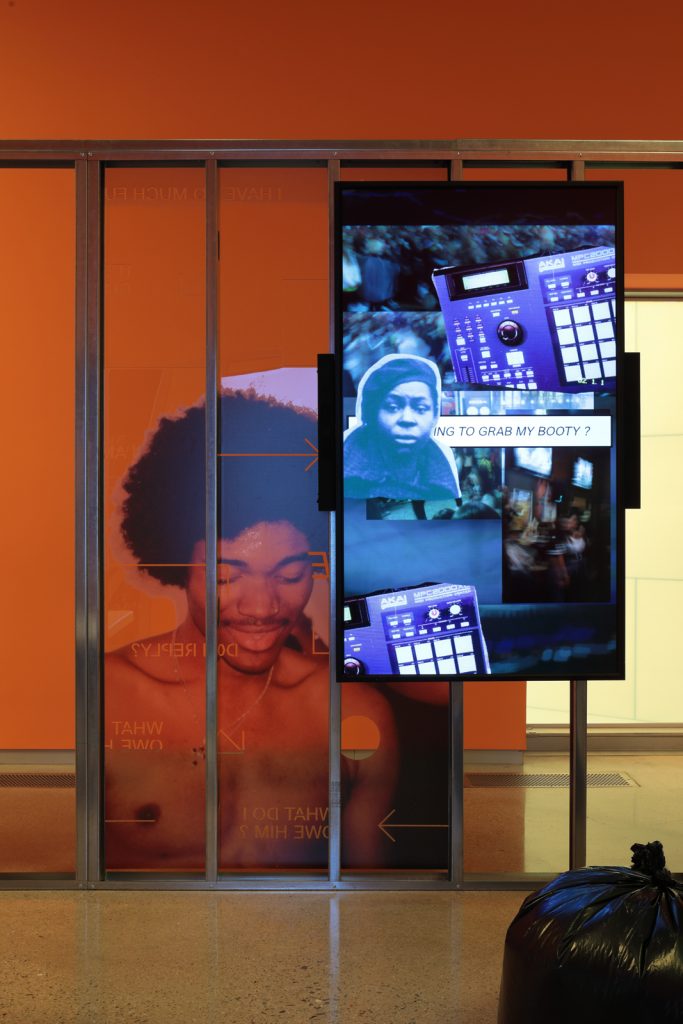
Installation view of Martine Syms’s “Shame Space,” ICA Virginia. Photo: © Martine Syms, courtesy Sadie Coles HQ, London; ICA Virginia; Bridget
Donahue, New York; and Technology Residency at Pioneer Works, Brooklyn.
You both have a lot of work revolving around the virtual world and AI, AR, apps, avatars: Do you see overlap in your creative instincts as well?
Trevor: Yes and no. I think I would probably flatter myself if I said just yes. I’m like a Trevor that’s aspiring to be a Martine. Martine, to me, is always pushing things creatively. I think living in service of ideas is a space I would like to be able to exist in, whereas I think I actively more or less live in service of where ideas meet the market. Wherever the center of that venn diagram is. I’ve always joked I just wanted to be a two-Michelin-star corndog, the space where my countryass friends meet more advanced palates. And that’s across the idea spectrum.
Martine: I think that obviously we connected for many reasons, and one thing that’s been really interesting to me over the last couple of years have been ideas around embodiment, and how that intersects with what people call “the digital.” Which has a material reality to it and material consequences that people are just now learning about. This whole fiction of “the cloud” has sort of obfuscated the true human costs and environmental realities that undergird how we connect in these ways. And the histories of those two things, and how humans connect to that has been really interesting to me.
This reminds me, it seems like the art world might be playing catch-up with NFTs, and it’s a global conversation now. What is your experience with them so far?
Trevor: I have so many thoughts, mine are probably the more commonplace ones—Martine, fire off!
Martine: My thing with NFTs is, I’ve pretty much been asked about them every day for the last three months. I feel like the first time they were brought up to me was the week after Christmas, and then with increasing fervor, multiple times a day, every day. I haven’t seen very much interesting work, that’s my first thought. I’m kind of looking at it and paying attention to it, but people keep being like, “Oh, you could make a ton of money! You should put something on there!” I like money, but I don’t care that much. It’s still hard for me to just do something because I could make a ton of money because of it, and I think that’s to my detriment in some regards. But Trevor, what’s your take?
Trevor: I mean, almost all the work that I’ve seen is incredibly boring. We’re kind of in the porting formats phase of a new format where it’s like people are reading books on the radio, and you’re like, “Yeah, I guess you could do that.” But there’s way more interesting things to come. I think the protocols, to me, are more interesting than the artwork at this point. People are just starting to explore how you can leverage protocols to do interesting things.
The part that I am really interested in, and this is market brain, is seeing how much these works are selling for. I’ve grown up in an era where I didn’t even know how to price the value I was creating. What do you think the Drake “Hotline Bling” dance would sell for? Probably more than a Beeple, you know what I mean? So what I’m recognizing is how much value these platforms were capturing and kind of removing from artists. I think obviously there will be a rent-seeking middleman in any version of this, but minimizing the amount of stake they can have is intriguing to me.
Martine: And I just want to say, for the record, Trevor has always been trying to get me to buy crypto and I never did [laughs]. So many times, literally on my phone like, “Just do it.” And I was like, “Yeah, whatever man… .”
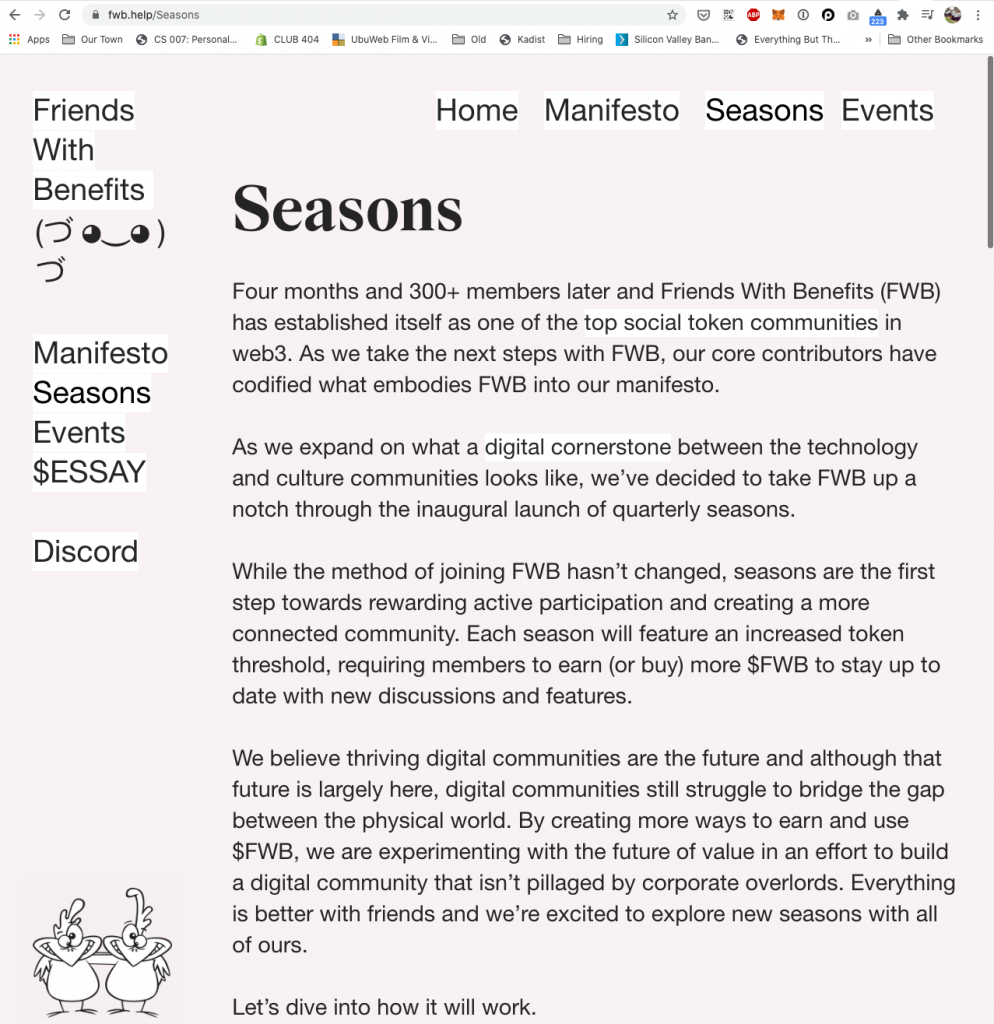
A screenshot of Friends With Benefits Tokenized Community. Photo courtesy Trevor McFedries.
Almost the opposite of this topic is something that Artnet News has been exploring, the idea of EQ and empathy within art and creativity. How have emotional intelligence and empathy played into your practices?
Martine: I mean, I think it’s a big topic of my work in general. I’ve always been really interested in human development, early childhood development and beyond. That’s the engine of a lot of the things I’m doing and some of the patterns I’m interested in: how people communicate, how they get what they want or don’t or miscommunicate, or failures of language.
I would say I’m pretty attuned emotionally to people. In some ways, I’m directing a lot, and that is a kind of intimacy that has to be created. To make the work I want to make, I have to be able to establish intimacy with people, and talk to them about these things, or like, get to that. Yeah, so it’s like, I use it all the time.
Trevor: I can sometimes struggle with the interpersonal stuff. I’m probably more comfortable on my phone in a corner, like, when I meet people they can be my people. I think sometimes the emotional part, that part is clear, but it maybe isn’t as present as I’d like it to be. The EQ part of me is something that’s tied up in my Midwest roots as well.
So is there anything that you’re doing to motivate your creativity or, alternatively, to decompress in 2021?
Trevor: I would say like, real broken-home kid stuff. I love chaos, you know? When things are a mess, things are being reordered, I just want to insert myself into it and try to bring some order to it. So in these moments when I feel like everything is being shaken up, like, no rules, I’ve been very inspired to wake up and be like, “Let me see if I can make an idea heard that otherwise might have been pushed to the side.” What’s the Naomi Klein quote? Make use of a good crisis?
Martine: Hmmm… I don’t know if I have a great answer for this one. I would say last year was a very uninspiring year to me. And what seemed most important was just taking care of myself and my people.
Personally, I’ve just been really focused on being even less reactive. And being really interested in putting things into the world and what work I want to make. I’ve been in the studio a ton, which is fun, because I was traveling so much the last few years. I’ve been so productive in this other way, but in a different way than I’d been thinking about it.
That’s been really fun to have no deadlines and also be reminded of the elasticity of time and how there’s no rush, and there’s actually no reason to do everything before you’re 30, and that you’re not gonna lose momentum, and it doesn’t matter. Now we’ve seen what happens when the whole world is shut down.
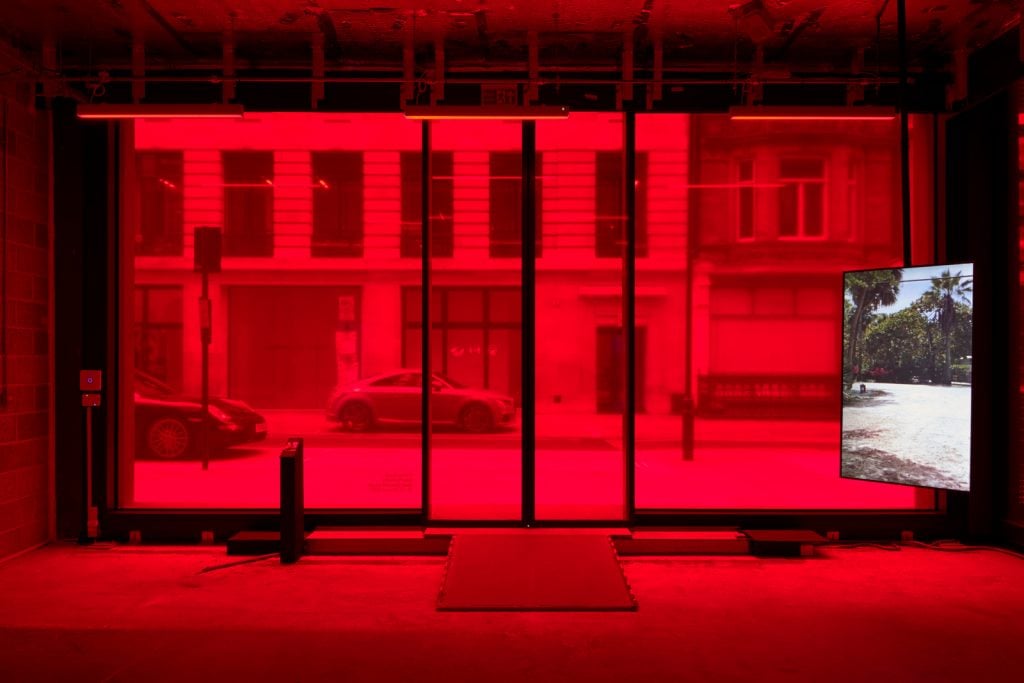
Installation view, “Martine Syms: Ugly Plymouths,” 2020. Photo: © Martine Syms, courtesy Sadie Coles HQ, London. Shot by Robert Glowacki.
As the two of you are talking about each other it just made me think—is there anything that the other has done that inspired you? Or you’d say, like, “That’s the peak of cool”?
Trevor: I would say Martine’s ways of being. It’s as simple as watching her walk down Larchmont with some groceries, you know? Just existing in a way that’s very true to Martine I think is amazing and super cool. And walking into her space and seeing sketches and thoughts and beautiful artwork in a cozy home and like, I think existing in a way that I wasn’t led to believe you could exist. So, that stuff is super inspiring.
Martine: Oh, thank you, thank you. Well, I’m sure you try to get away from it, but Lil Miquela is just such a crazy project, there’s so much to be said about it. I just trip out on it. I think that in some ways, Miquela speaks to… like, it’s the influencer we all deserve? You know?